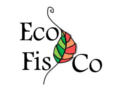Dynamic Quality Index for agricultural soils based on fuzzy logic
- Authors:
- Rodriguez E, Peche R, Garbisu C, Gorostiza I, Epelde L, Artetxe U, Irizar A, Soto M, Becerril JM, Etxebarria J
- Year:
- 2016
- Journal:
- Ecological Indicators
- Volume:
- 60
- Initial page - Ending page:
- 678 - 692
- ISBN/ISSN:
- 1470-160X
- Description:
-
The increasing number of successful applications of fuzzy logic and fuzzy sets theory to dealing with the uncertainty, imprecision and subjectivity inherent to environmental quality assessments, and the recent development of new procedures based on fuzzy logic for the design of environmental quality indexes open new ways to carry out more rigorous and realistic estimations of soil quality. With these considerations in mind, the aim of this work is to design an index based on fuzzy logic, which is especially addressed to assess the dynamic quality of agricultural soils - Soil Dynamic Quality Index (S-DQI). This index is described by a group of three indexes (S-DQI(PHYS), S-DQI(CHEM), S-DQI(BIOL)), each one designed to evaluate the dynamic quality of agricultural soils with regard to their physical, chemical and biological characteristics, respectively. Each index is determined from the joint opinion of a panel of experts, which decides: (i) the attributes or properties of soil which determine its dynamic quality for farming; (ii) the most suitable indicator for quantifying each of them; (iii) the influence of the values taken by these indicators on the quality of agricultural soils, which is expressed by means of membership functions, and (iv) the relative importance of the attributes in the respective index, which is expressed by means of normalized priority vectors. The value of each of these indexes is finally obtained as a result of a fuzzy inference procedure, which is a crisp value ranging from 0 to 1. This procedure allows us to express the values taken by the indicators in a particular agroecosystem by means of both crisp values and fuzzy numbers, the latter being frequently a more rigorous and realistic way of representing the estimations of the soil properties in any emplacement. Verification tests show the satisfactory response capability of the index to changes in the soil properties. The use of the designed S-DQI for routine monitoring of the quality of farming soil allows the estimation of the changes induced in the soil due to use, which is helpful to assess systematically the sustainability of the agricultural practices. (C) 2015 Elsevier Ltd. All rights reserved.

